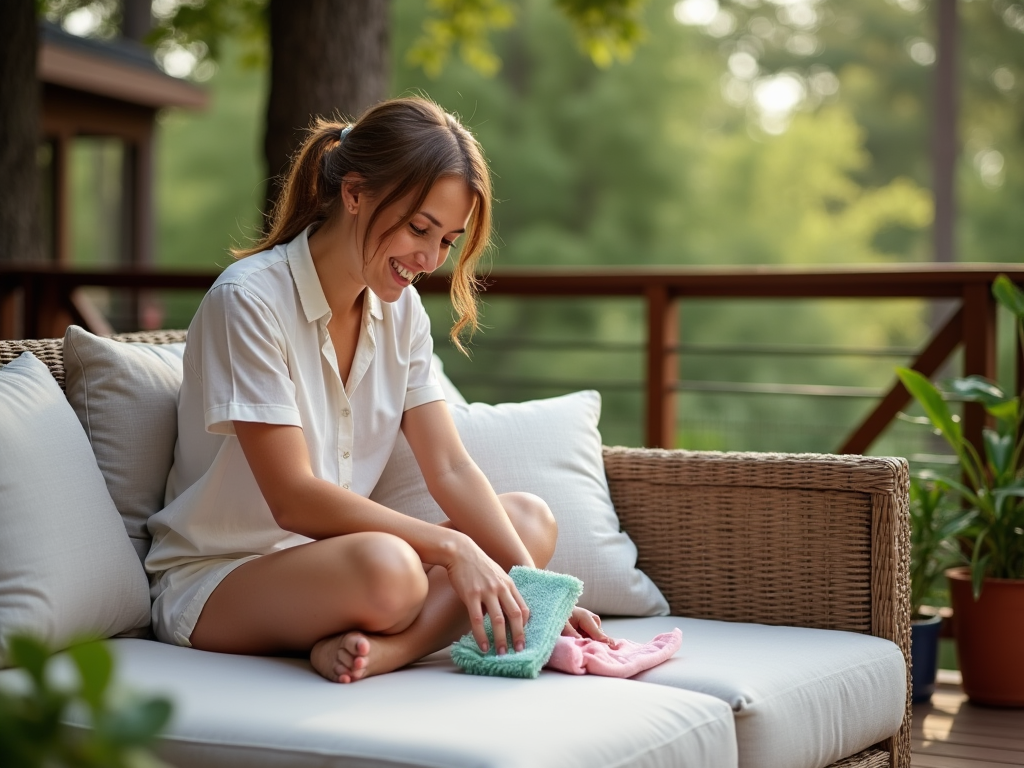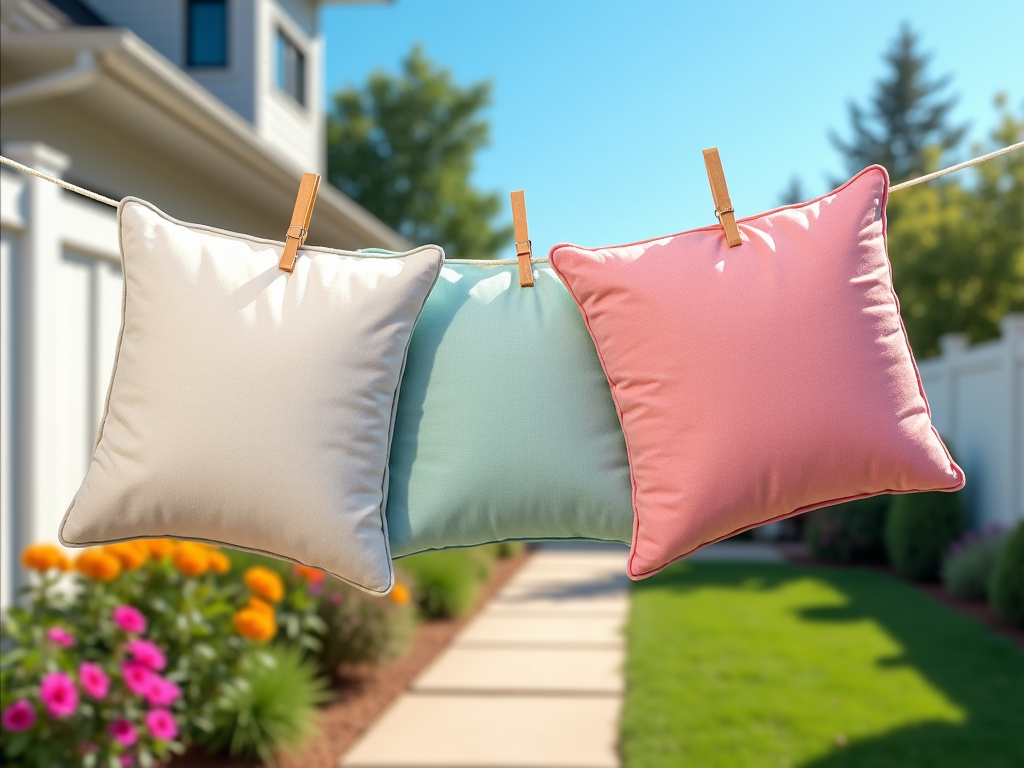Outdoor patio furniture is often a favorite gathering spot during warm weather, but nothing dampens the mood of a beautiful backyard than dirty and stained cushions. These cushions, often exposed to the elements, can quickly collect dirt, grime, and even mildew if not properly cared for. Surprisingly, the approach to maintaining them can resemble the process of cleaning a rug. While they may not be on your living room floor, those cushions deserve the same level of care to enhance their longevity and appearance. Cleaning your outdoor cushions can be easier than you think, especially when you approach the task with the right mindset and techniques. With a few simple steps, you can have your cushions looking and feeling fresh, making your outdoor space inviting once again.
Understanding Your Patio Furniture Cushions

Outdoor cushions come in a variety of materials, including synthetic fabrics that are designed for durability and natural fibers that bring a touch of elegance. Understanding these materials is crucial because the correct cleaning method varies significantly. Synthetic fabrics, like acrylic and polyester, are generally more resistant to stains and moisture, while natural fibers may require gentler treatment to avoid damage. Recognizing the differences can prevent you from accidentally ruining your cushions during the cleaning process. Moreover, many modern outdoor cushion materials come with special coatings that can repel water and stains, simplifying maintenance efforts. This is why it’s vital to check the product details or care labels before diving into the cleaning routine.
Preparing for Cleaning

Before beginning the deep cleaning process, preparation is essential. Start by removing the cushions from their frames to access all sides thoroughly. Once they’re free, give them a good shake to dislodge any loose debris, such as dirt and leaves. For stubborn particles that refuse to budge, use a soft brush to gently sweep over the surface. This initial step is vital for effective cleaning, ensuring that dirt doesn’t mix with your cleaning solution, which could make stains harder to remove. With everything prepped, you can move on to gathering your cleaning supplies. This will streamline the process and make sure you have everything you need at hand.
- Water (preferably warm)
- Mild detergent (no bleach or harsh chemicals)
- Soft brush or cloth for scrubbing
- Vinegar solution for tougher stains (1 part vinegar to 3 parts water)
- Bucket for mixing solutions
Cleaning Methods for Different Fabrics
Now that you have your supplies ready, let’s look at how to clean different types of fabrics effectively. Understanding the nature of the fabric will dictate your cleaning method. For synthetic fabrics, you’ll generally find that they are more forgiving and can withstand machine washing if the care label permits it. On the other hand, natural fiber cushions require a gentler touch. Spot cleaning is often the best approach here to maintain the integrity of the materials. Additionally, make sure to avoid excessive moisture when cleaning natural fibers to prevent mold growth, which can be a challenge.
For Synthetic Fabric Cushions
If your cushions are made from synthetic materials, you have more options at your disposal. Most synthetic cushions can either be hand washed or placed in the washing machine. When opting for machine washing, use a gentle cycle and cold water to avoid shrinkage. After washing, allow them to air dry completely; this prevents any mildew from developing. In terms of drying time, it’s important to follow care label instructions, as improper drying can lead to warping or other forms of deterioration. Remember also to check for colorfastness before applying any cleaner.
For Natural Fiber Cushions
Natural fibers, such as cotton or linen, need a more delicate method of cleaning. Start by spot-treating any stains with a water and vinegar solution. Gently blot the area rather than scrubbing, as this could damage the fabric. Additionally, consider using a microfiber cloth during the process; its non-abrasive material is less likely to harm delicate fibers. For a deeper clean, you might use diluted mild detergent to scrub lightly; however, always ensure that they’re not completely soaked. The key here is to maintain moisture without oversaturating the cushions.
| Fabric Type | Cleaning Method | Drying Tips |
|---|---|---|
| Synthetic Fabrics | Machine wash or hand wash with mild detergent | Air dry completely; avoid direct sunlight |
| Natural Fibers | Spot clean with vinegar solution; hand wash if necessary | Air dry away from direct heat |
Stain Treatment Techniques
Treating stains promptly ensures that they don’t set in and become stubborn over time. Begin by identifying the type of stain (food, drink, mold, etc.) for the most effective treatment. For example, greasy stains may require a mixture of dish soap and water, while mildew can be tackled with a vinegar solution. It’s essential to apply the cleaning solution and allow it to sit for a few minutes before gently blotting it away. As a best practice, always test any cleaning solution on a small, inconspicuous area to prevent discoloration. Remember to let cushions dry properly before reusing them.
Drying and Maintaining Your Cushions
After cleaning, drying your cushions effectively is critical to maintaining their condition. Air drying is generally the safest option for both synthetic and natural fibers, as it prevents heat damage from dryers. Place your cushions in a well-ventilated area, turning them occasionally to ensure they dry on all sides. If the cushions are wet for too long, they can develop mold or mildew, negating your cleaning efforts. Additionally, during off-seasons, storing cushions can help prolong their lifespan; consider putting them in a dry, cool place and covering them to protect against dust and moisture. Regularly rotate cushions when in use can also distribute wear evenly.
Conclusion
Regular cleaning and maintenance of outdoor patio furniture cushions can significantly enhance their lifespan and overall appeal. Approaching this task with the right techniques, similar to caring for a beloved rug, makes all the difference. By understanding the different materials, choosing the appropriate cleaning method, and ensuring proper drying and storage, you can keep your cushions looking fresh and inviting. So whether you’re hosting a summer barbecue or simply enjoying a quiet evening outdoors, you’ll be proud of your well-maintained space.
Frequently Asked Questions
- How often should I clean my outdoor patio cushions? It is recommended to clean them at least once a season, or more frequently if they are subject to spills or heavy use.
- Can I use bleach to clean my cushion covers? It’s best to avoid bleach as it can damage fabric fibers; instead, opt for mild detergents or vinegar.
- What should I do if my cushions have developed mold? Use a solution of water and vinegar to treat mold spots, scrub gently, and ensure the cushions are thoroughly dried afterward.
- Are outdoor cushions machine washable? Many outdoor cushions are machine washable, but always check the care label before doing so.
- How can I protect my cushions from future stains? Consider applying a fabric protector spray designed for outdoor use that repels water and stains.
